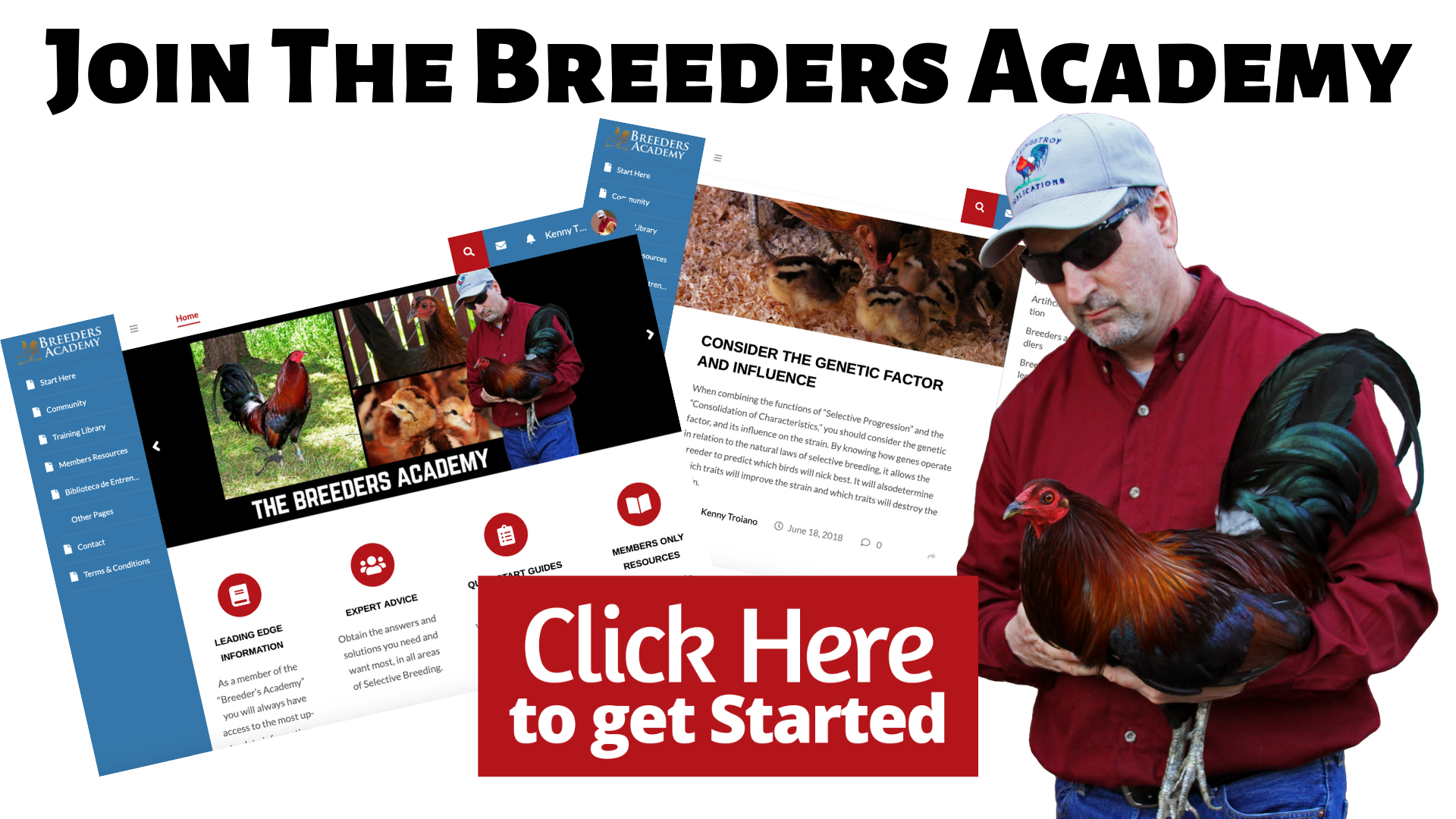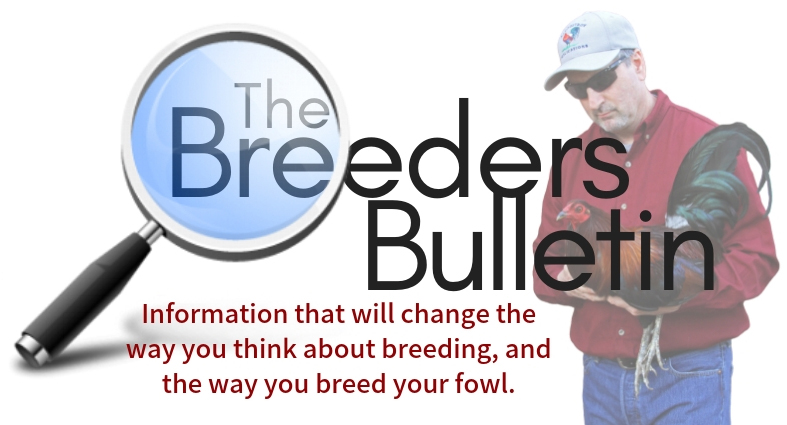By Kenny Troiano
The practice of culling should be from the day they hatch to their eventual death. Birds are culled for a variety of reasons, but in order to cull properly you must first understand what a cull is.
The object of every breeder should be to produce fowl that are of the highest quality. To accomplish this, start by using brood fowl that are as near perfect as possible, and of the proper age. Culling should give preference to birds that show at least some improvement over their parents. These are simple goals to go by, however, on my farm I cull for:
- Physical deformities
- Poor conformation of body
- Improper color of plumage, eyes, legs, face and earlobes
- Bad temperament, and
- Poor performance abilities, almost in that order.
I cull throughout the life cycle of that bird, and cull chicks as well as mature cocks and hens. It is a huge waste of time and money to grow chicks that are weak and deformed. Cull against chicks that develop slowly, or are not energetic or might otherwise be described as unthrifty.
The timing is usually determined by how soon I’m able to spot a reason for culling a particular bird. Often this occurs during regular periods of inspection. For example:
- When transferring chicks from the brooder or broody housed to the pens at four weeks of age
- Transferring the quail sized stags and pullets from the pens to free range at six to eight weeks of age
- And catching the stags and pullets from the range for penning at six months of age.
- Or when selecting fowl for the broodpen.
At these times, I look for physical deformities such as:
- Crooked toes and duck-toes
- Skeletal irregularity, such as crooked breast bones and hump backs
- Damaged knee joints or birds that are knock-kneed
- I look for birds with crooked beaks
- Damage or defects, which concern the eyes
- Broken wings or split wings
- Defects of the tail, such as wry tail, squirrel tail, or down tail
- And poor conformation of body and carriage.
These are just some of the things I look for. (To learn more on this subject check out the “Gamefowl Breeders Manual and Cockers Guides – Volume One and Two.” The information in these books will give you a good idea of what I‘m talking about).
Don’t just visually inspect the birds, you must manually pick them up and examine each individual, one at a time.
I also cull chicks that are “runts,” which are noticeably smaller than their brothers and sisters, since these will mature into very small stags and pullets. If bred they will likely produce small offspring as well. Small backyard flocks can degenerate very rapidly, especially if you make no effort to select in favor of health, vigor, body size, durability, and good reproduction. In all cases, cull in favor of disease resistance, good constitution, and good temperament. Any bird that does not measure up should go into the frying pan, the freezer, or the compost pile.
When you first obtain your fowl, it’s normal to want to breed all you can from them. However, after the first generation of offspring is secured and matured, start culling any of the problem breeders, so that the flock will be comprised of good birds only, but also birds that are able to transmit their good qualities to their offspring. Pay the same attention to hens as you would your cocks. They still make at least fifty percent of your breeding flock, in some cases a lot more.
I hope you enjoyed the newsletter, and that the information which I provide helps you in advancing your family. Remember, if we all work harder to perpetuate superior fowl, fowl that have the complete package (appearance, temperament and performance), everyone benefits.
Hope you have a great breeding season.
Sincerely,
Kenny Troiano

